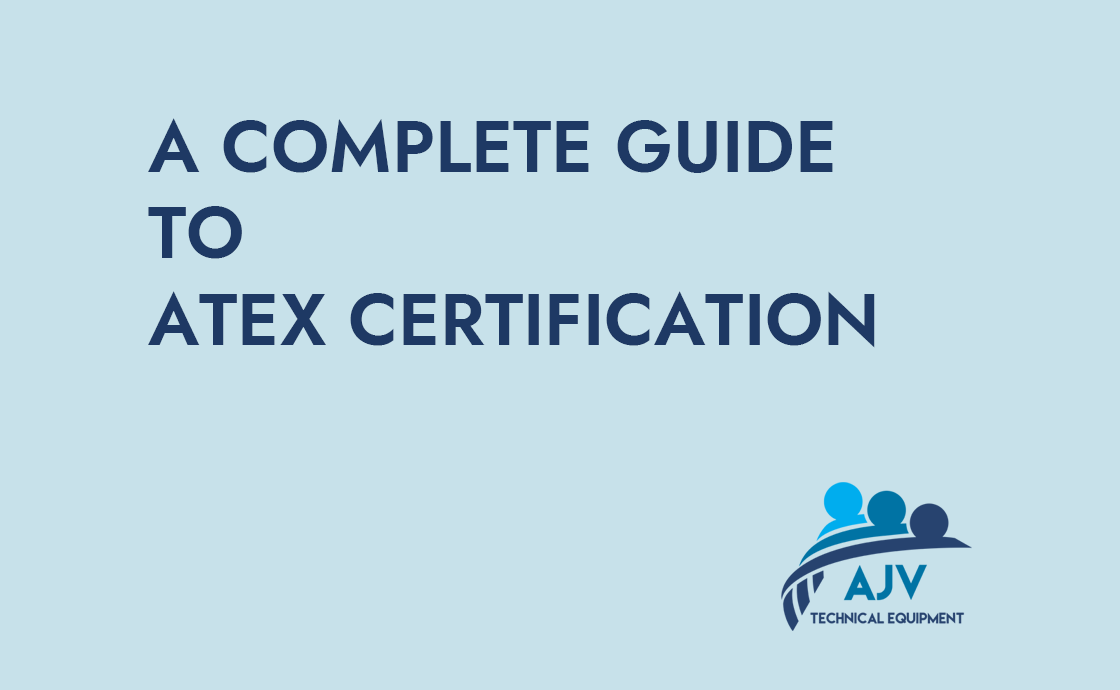Any discussion about a hazardous area or explosion protection is incomplete without an understanding of ATEX certification. In fact, the certification is where it all starts. In this article, we take an in-depth look into various aspects of ATEX certification.
What is ATEX?
ATEX or Explosive Atmosphere is the term used for a work area which may contain a risk of explosion. An explosion can be caused when a fuel (vapour, liquid or dust), oxidiser (oxygen from the air) and an ignition source (a flame, spark or high-temperature surface) come in contact with each other.
All tools and equipment operated in an ATEX environment have to be of a special kind. They need to be specially designed to prevent or cause an explosion from happening and have the ATEX certification. Thus ATEX certified products can work with flammable materials safely.
ATEX certification
ATEX certification is regulated by two European Directives, which are:
1. The “Workplace” Directive 1999/92/CE (RD 681/2003). This is commonly known as ATEX 135. It states the minimum requirements for improving the health and safety protection of workers, which is the responsibility of the facility’s owner.
2. The “Equipment” Directive 2014/34/EU (RD 144/2016). This is commonly known as ATEX 95. This directive establishes the safety requirements for equipment and systems used in different environments, the responsibility of which lies with the manufacturer.
ATEX groups and atmospheres
The regulations divide the work environment into several groups and each ATEX equipment needs to have the necessary group marking.
Directive 2014/34/EU categorizes environments to identify the correct equipment to be used in such environments:
Group I: Mines susceptible to firedamp.
Group II: Explosive environment other than mines and their surface installations.
The Directive (2014/34/EU) also divides a work atmosphere into two categories based on its explosive nature:
1. Atmosphere G (Gas)
2. Atmosphere D (Dust)
ATEX Zones
Directive 1999/92/CE further categorises atmospheres into zones based on the level of risk:
Zone 0: Permanent Danger – A permanent explosive atmosphere, where the risk of the explosion remains for long periods.
Zone 1: Potential Hazard – An environment where an explosive atmosphere forms under normal circumstances.
Zone 2: Minimum Danger – A location where the risk of explosion is not present normally, but can occur sometimes and exists for a short period of time.
Each equipment used in an explosive environment needs to have zone labelling as well. An equipment fit to be used in a certain zone cannot be used in any other zone.
Ignition Temperature
Another aspect, which is of supreme importance while discussing ATEX is the ignition temperature. Directive 2014/34/UE defines ignition temperature as the temperature at which the release of vapour is sufficient for ignition when energy is contributed from an external source. The temperature is different for dust and gas.
In the case of explosive dust, the maximum surface temperature and the maximum authorised temperature that the equipment surface can reach are the same. This can be during normal or abnormal operations.
Thus, there are 6 temperature categories:
| Temperature class required by zone classification | Gas or vapour ignition temperature in °C |
| T1 | >450 |
| T2 | >300 |
| T3 | >200 |
| T4 | >135 |
| T5 | >100 |
| T6 | >85 |
However, in the case of dust, the following values are assigned:
T-inflammation: Inflammation temperature of a dust cloud.
T-inflammation – 5: Flash temperature of a 5mm thick layer of the same powders.
How to interpret an ATEX labelling?
An ATEX label will have several markings with digits and alphabets. Here is an example of how it may look. These markings are based on the sections described above but will, of course, vary for each equipment.

- Ex: denotes the equipment can be used in Explosive Atmospheres.
- II: Is the general marking according to the Directive. II indicates the product can be used in surface installations within an explosive gas atmosphere. But it can be used in mines.
- 2: Refers to the equipment category.
- G: Indicates that the equipment can be used in explosive gas or dust atmospheres.
- Ex: Refers to non-electrical equipment suitable for usage in a potentially explosive atmosphere.
- h: Denotes the protection types. “h” indicates that no protection is required. Every equipment will have very specific protection requirements and specific regulations which need to be followed.
- IIB: Is the zone group. In this case, zone IIB refers to surface installations and gas mixture B (Ethylene, butadiene).
- T5: Is the temperature type as per the table mentioned above under the ignition temperature section. In this case, the equipment can be used at a surface temperature between 85°C to 100°C.
- Gb: Refers to the equipment protection level.
- X: Indicates special conditions of use.
Of course, this is a simplified illustration. ATEX equipment may have more complicated labelling depending on the kind of equipment. When it comes to ATEX, it’s all about safety. To gain a further understanding of protection methods used in explosive environments, we recommend you to read our article Concepts for protection of hazardous areas.

